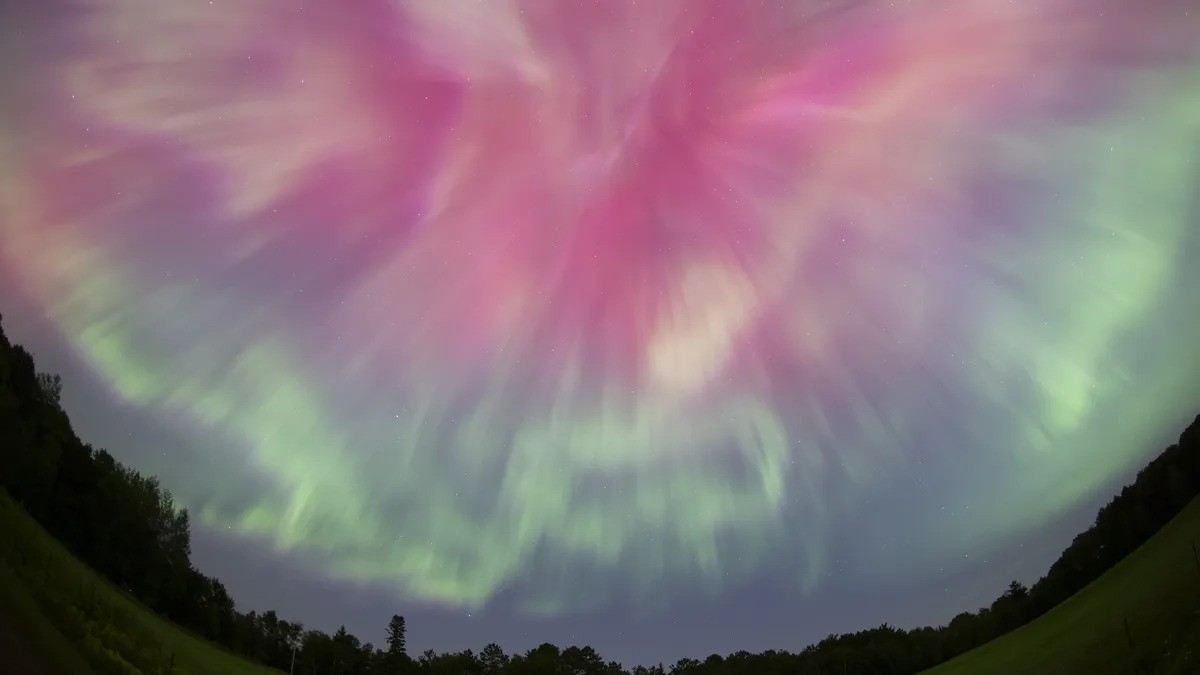(图片来源:Anadolu via Getty Images)
广告 | Advertisement
在澳纽网做广告 | Advertise with us
The storm is expected to crackle through our planet’s atmosphere from Thursday into Friday (Oct. 10 to 11), causing possible power grid disruptions and generating bright auroras at much lower latitudes than usual, according to an alert from the National Oceanic and Atmospheric Administration’s (NOAA) Space Weather Prediction Center (SWPC).
根据美国国家海洋和大气管理局 (NOAA) 太空天气预报中心 (SWPC) 的警报,预计这场风暴将于周四至周五(10 月 10 日至 11 日)穿过我们星球的大气层,可能导致电网中断,并在比平时低得多的纬度地区产生明亮的极光。
The solar outburst, known as a coronal mass ejection (CME), is the result of a powerful solar flare that erupted from our star on the evening of Oct. 8, according to NOAA. The flare has been categorized as an X 1.8-class solar flare, which is the strongest type of flare the sun can emit.
据美国国家海洋和大气管理局(NOAA)称,这次太阳爆发被称为日冕物质抛射(CME),是10月8日晚上从我们的恒星喷发的强大太阳耀斑的结果。耀斑被归类为 X 1.8 级太阳耀斑,这是太阳可以发出的最强耀斑类型。
广告 | Advertisement
在澳纽网做广告 | Advertise with us
Solar flares occur when tangled magnetic-field lines on the sun violently snap back into place. Some flares may be accompanied by CMEs — fast-moving blobs of plasma that can take several days to reach Earth, if our planet happens to be within the firing line. Upon hitting our planet, CMEs can cause major disturbances in Earth’s magnetic field known as geomagnetic storms, resulting in technological malfunctions and widespread auroras. NOAA measures geomagnetic storms on a scale of 1 to 5, with G1 storms considered “mild” and G5 storms dubbed “extreme.”
当太阳上纠缠在一起的磁场线猛烈地弹回原位时,就会发生太阳耀斑。一些耀斑可能伴随着 CME——如果我们的星球恰好在火线内,快速移动的等离子体团可能需要几天时间才能到达地球。CME 撞击我们的星球后,会在地球磁场中引起称为地磁暴的重大干扰,从而导致技术故障和大范围的极光。NOAA 以 1 到 5 的等级测量地磁风暴,其中 G1 风暴被认为是“温和的”,G5 风暴被称为“极端的”。
来源:Live Science
广告 | Advertisement
在澳纽网做广告 | Advertise with us
15,548 views






